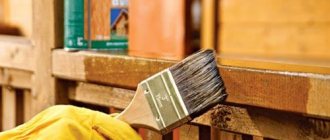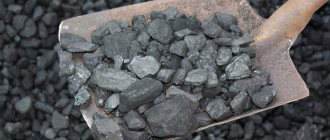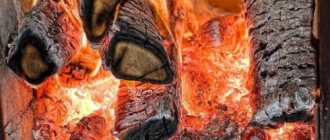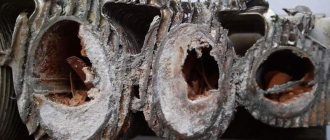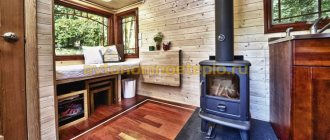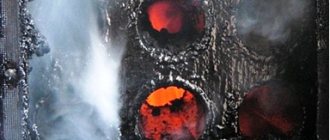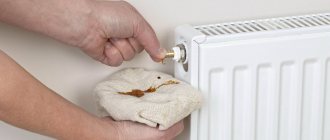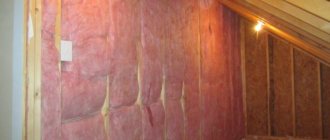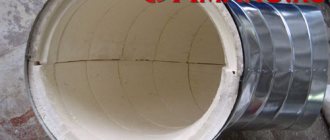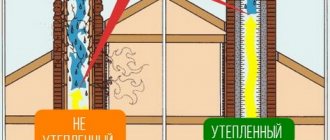Temperature threshold for combustion of wood of various species
Depending on the structure and density of wood, as well as the amount and characteristics of resins, the combustion temperature of firewood, its calorific value, and the properties of the flame depend.
If the wood is porous, it will burn very brightly and intensely, but it will not produce high combustion temperatures - the maximum value is 500 ℃. But denser wood, such as hornbeam, ash or beech, burns at a temperature of about 1000 ℃. The combustion temperature of birch (about 800 ℃), as well as oak and larch (900 ℃) is slightly lower. If we are talking about species such as spruce and pine, then they light up at approximately 620-630 ℃.
Factors influencing the burning temperature of firewood
There are several factors that contribute to combustion:
- The type of wood used for combustion.
- Humidity of the material.
- The volume of air entering the firebox.
These are the main indicators that need to be paid special attention to, since the efficiency of wood combustion and the temperature that can rise during the combustion process will depend on them.
Humidity level
Wood moisture plays a key role during ignition, so such an important point requires separate consideration. Any tree that has just been cut down has a certain moisture content. In most cases this figure is 50%. But in some cases it increases to 65%. This means that this type of material will dry for a very long time under the influence of high temperatures before igniting.
Part of the heat will be spent only to remove excess moisture through evaporation. For this reason, the temperature will not reach the maximum value. Under this condition, heat transfer will decrease.
To get maximum benefit, there are several basic options you should use:
- The most suitable option is drying. To do this, the tree is cut into small pieces and then stored in a dry place in a barn or shed. Under natural conditions, the drying process will take approximately 1 year. And if the firewood is stored longer and lasts two summers, then its humidity will be 20%. This is already the optimal indicator.
- The second option is less preferable - burn what you have, not paying attention to humidity. But in this situation, you will have to spend twice as much firewood to create the desired temperature. In addition, you should be prepared to clean the chimney of soot.
The better the wood is dried, the higher the combustion temperature can be achieved. And the release of heat depends on this. There will be no heat with wet wood.
Warming up process
Heating is the heating of a separate section of wood material to a temperature sufficient to ignite the entire surface.
Usually 120 degrees is enough to heat up - the wood begins to char
The process will then continue as coal is formed. When heated to 250-350 degrees, the selected material will begin to decompose into its components. Then smoldering begins, but the flame does not appear yet. At this point, you can observe the formation of smoke. As the temperature continues to rise, the level of pyrolysis gases increases—an outbreak occurs. The wood will burn completely.
Flammability of materials
The flammability is directly affected by the percentage of moisture contained in the selected rock. The power of the heating source plays an important role, as does the cross-section of the wood and the air flow rate.
To make the flame burn faster, it is advisable to use light wood that has high porosity. Wet wood will burn very slowly because it will dry out before it can form an open fire.
Combustion also depends on the shape of the tree - it is advisable to use a rectangle, since a circle will take much longer to burn. To speed up the process, it is necessary to select a material with a small cross-section and sharp ribs. It is important to ensure that the required amount of oxygen is supplied to the burning area.
The combustion temperature of firewood and flammability are also greatly influenced by the design of a home stove. It can be made from different materials and this directly affects the combustion temperature of the materials placed inside. If the stove is massive, then the wood in it will burn almost completely, but this process will take a very long time. Great care must be taken when using. Failure to comply with safety measures can lead to a fire in the wood-burning sauna at a high combustion temperature of the stove.
In a potbelly stove, wood often does not burn completely due to the fact that it cools quickly
A potbelly stove, made of steel sheet, cools quickly, while the heat is distributed throughout the surrounding space, but first it will move from the combustion zone to the walls, and only then into the room.
Combustion process
As you observe the operation of the furnace, you may wonder why the supplied air does not affect the color of the resulting flame. Oxygen should have a chemical effect and give the soot a bright color, which can even turn white. But this phenomenon can be easily explained, because the particle size also affects the temperature. The smaller it is, the lower the temperature will be. Therefore, the small hot particles develop the same temperature as the gas that surrounds them. It should also be noted that each type of wood has a certain heat transfer. To find out these numbers, you can study the table, which shows all the thermal conductivity indicators for each type of material.
Use of wood based on its heat capacity
When choosing a type of firewood, it is worth considering the ratio of cost and heat capacity of a particular wood. As practice shows, the best option can be considered birch firewood, which has the best balance of these indicators. If you purchase more expensive firewood, the costs will be less effective.
To heat a house with a solid fuel boiler, it is not recommended to use types of wood such as spruce, pine or fir. The fact is that in this case, the combustion temperature of the wood in the boiler will not be high enough, and a lot of soot will accumulate on the chimneys.
Firewood made from alder, aspen, linden and poplar also has low thermal efficiency due to its porous structure. In addition, sometimes during the burning process alder and some other types of firewood shoot out coals. In the case of an open furnace, such micro-explosions can lead to fires.
It is worth noting that no matter what the wood is, if it is damp, it burns worse than dry wood and does not burn completely, leaving a lot of ash.
Use of wood in various sectors of the national economy
Wood is widely used in the following industries:
- plywood – veneer, plywood;
- woodworking – wood boards, matches, carpentry, furniture;
- logging – raw materials used in the wood chemical industry, consumer goods products, firewood of all types;
- sawmill – various lumber;
- wood chemical – tar, charcoal, acetic acid;
- pulp and paper – paper, cardboard, cellulose;
- hydrolytic – feed yeast, ethyl alcohol.
Heat transfer when burning wood in a stove
There is a direct relationship between the combustion temperature of wood in a stove and heat transfer - the hotter the flame, the more heat it releases into the room. The amount of thermal energy generated is influenced by various characteristics of the tree. Calculated values can be found in reference literature.
It is worth noting that all standard indicators were calculated under ideal conditions:
- the wood is well dried;
- the furnace firebox is closed;
- oxygen is supplied in clearly dosed portions to support the combustion process.
Naturally, it is impossible to create such conditions in a home oven, so less heat will be released than calculations show. Therefore, the standards will be useful only for determining the general dynamics and comparing characteristics.
What is the combustion process
An isothermal reaction in which a certain amount of thermal energy is released is called combustion. This reaction goes through several successive stages.
In the first stage, the wood is heated by an external fire source to the ignition point. As it heats up to 120-150 ℃, the wood turns into coal, which is capable of self-ignition. Once the temperature reaches 250-350 ℃, flammable gases begin to be released - this process is called pyrolysis. At the same time, smoldering of the top layer of wood occurs, which is accompanied by white or brown smoke - these are mixed pyrolysis gases with water vapor.
At the second stage, as a result of heating, the pyrolysis gases ignite with a light yellow flame. It gradually spreads over the entire area of the wood, continuing to heat the wood.
The next stage is characterized by ignition of the wood. As a rule, for this it should warm up to 450-620 ℃. For wood to ignite, you need an external heat source that is intense enough to rapidly heat the wood and speed up the reaction.
In addition, the rate of firewood ignition is influenced by factors such as:
- craving;
- wood moisture;
- cross-section and shape of firewood, as well as their quantity in one stack;
- wood structure - loose firewood ignites faster than dense wood;
- placement of the tree relative to the air flow - horizontally or vertically.
Let's clarify some points. Since wet wood, when burning, first evaporates excess liquid, it ignites and burns much worse than dry wood. Shape also matters—ribbed and jagged logs ignite more easily and quickly than smooth, round ones.
The draft in the chimney must be sufficient to ensure the flow of oxygen and dissipate thermal energy inside the firebox to all objects located in it, but not to blow out the fire.
The fourth stage of the thermochemical reaction is a stable combustion process, which, after the outbreak of pyrolysis gases, covers all the fuel in the furnace. Combustion goes through two phases - smoldering and burning with flame.
During the smoldering process, the coal formed as a result of pyrolysis burns, while gases are released rather slowly and cannot ignite due to their low concentration. The condensation of gases as they cool produces white smoke. As wood smolders, fresh oxygen gradually penetrates, causing the reaction to further spread to the rest of the fuel. The flame occurs as a result of the combustion of pyrolysis gases, which move vertically towards the outlet.
As long as the required temperature is maintained inside the furnace, oxygen is supplied and there is unburnt fuel, the combustion process continues.
If such conditions are not maintained, then the thermochemical reaction enters the final stage - decay.
How to determine the combustion temperature in a wood-burning stove
Measuring the combustion temperature of wood in a fireplace can only be done with a pyrometer - no other measuring instruments are suitable for this.
If you do not have such a device, you can visually determine approximate indicators based on the color of the flame. Thus, a low temperature flame has a dark red color. A yellow light indicates that the temperature obtained by increasing the draft is too high, but in this case more heat is immediately evaporated through the chimney. For a stove or fireplace, the most suitable combustion temperature will be one at which the color of the flame will be yellow, such as, for example, dry birch firewood.
Modern stoves and solid fuel boilers, as well as closed fireplaces, are equipped with an air supply control system to adjust heat transfer and combustion intensity.
Heat output of wood
In addition to the value of calorific value, that is, the amount of thermal energy released during fuel combustion, there is also the concept of heat output. This is the maximum temperature in a wood-burning stove that the flame can reach when the wood is burning intensely. This indicator also completely depends on the characteristics of the wood.
In particular, if the wood has a loose and porous structure, it burns at fairly low temperatures, producing a light, high flame, and produces fairly little heat. But dense wood, although it flares up much worse, even with a weak and low flame gives a high temperature and a large amount of thermal energy.
Properties of wood
Different tree species have the following physical properties:
- Color – it is influenced by climate and wood type.
- Gloss depends on how the heart-shaped rays are developed.
- Texture – related to the structure of wood.
- Humidity is the ratio of removed moisture to the dry mass of wood.
- Shrinkage and swelling - the first results from the evaporation of hygroscopic moisture, swelling - the absorption of water and an increase in volume.
- Density is approximately the same for all tree species.
- Thermal conductivity - the ability to conduct heat through the thickness of a surface, depends on density.
- Sound conductivity - characterized by the speed of sound propagation, depends on the location of the fibers.
- Electrical conductivity is resistance to the passage of electric current. It is influenced by breed, temperature, humidity, direction of fibers.
Before using wooden raw materials for specific purposes, first of all, they become familiar with the properties of wood, and only then does it go into production.
Humidity and combustion intensity
If the wood was recently cut down, it contains from 45 to 65% moisture, depending on the time of year and the species. Such damp wood will have a low combustion temperature in the fireplace, since a large amount of energy will be spent on evaporation of water. Consequently, heat transfer from damp wood will be quite low.
There are several ways to achieve optimal temperature in the fireplace and release enough heat energy to warm up:
- Burn twice as much fuel at a time to heat your home or cook food. This approach is fraught with significant material costs and increased accumulation of soot and condensate on the walls of the chimney and in the passages.
- Raw logs are sawn, split into small logs and placed under a shed to dry. As a rule, in 1-1.5 years, firewood loses up to 20% of moisture.
- Firewood can be purchased already well dried. Although they are somewhat more expensive, their heat transfer is much greater.
It is worth noting that the wood of raw felled poplar and some other species is completely unsuitable for use as fuel. It is loose, contains a lot of water, so when burning it produces very little heat.
At the same time, raw birch firewood has a fairly high calorific value. In addition, raw logs made from hornbeam, ash and other dense wood species are suitable for use.
Which wood burns hotter?
Channel PROGRAMMER'S DIARY
The life of a programmer and interesting reviews of everything. Subscribe so you don't miss new videos.
As already mentioned, firewood is one of the most used fuels for heating homes outside the city. Considering that all firewood burns at different temperatures, you need to choose those that are better. The main condition for burning wood is the presence of oxygen, and this largely depends on the design of the stove. In addition, each wood has its own chemical composition and density. The denser the wood, the greater the heat transfer from it. Particularly important for greater heat transfer of wood during combustion? in addition to the density and presence of oxygen, it has the moisture content of the wood.
Dry wood burns better and produces more heat than wet wood. Therefore, after cutting, they are put in woodpiles and dried under a canopy for a year. Anyone who has ever fired a stove with wood has noticed that some of them burn brightly, releasing a lot of heat, while others smolder and heat the stove little. Everything, it turns out, depends on the heat output of the firewood. According to this indicator, the most suitable species for burning in stoves are birch, pine and aspen.
How does draft in a stove affect combustion?
If an insufficient amount of oxygen enters the furnace firebox, the intensity and temperature of wood combustion decreases, and at the same time its heat transfer decreases. Some people prefer to cover the ash in the stove to extend the burning time of one bookmark, but as a result, the fuel burns with lower efficiency.
If wood is burned in an open fireplace, then oxygen freely enters the firebox. In this case, the draft depends mainly on the characteristics of the chimney.
Under ideal conditions, the formula for a thermochemical reaction looks something like this:
C+2H2+2O2=CO2+2H2O+Q (thermal energy).
This means that when oxygen is available, hydrogen and carbon are burned, resulting in thermal energy, water vapor and carbon dioxide.
For the maximum combustion temperature of dry fuel, about 130% of the oxygen required for combustion must enter the furnace. When the inlet dampers are closed, an excess of carbon monoxide is produced due to a lack of oxygen. Such unburnt carbon evaporates into the chimney, however, the combustion temperature inside the firebox drops and the heat transfer of the fuel is reduced.
Modern solid fuel boilers are often equipped with special heat accumulators. These devices accumulate an excessive amount of thermal energy released during fuel combustion under conditions of good traction and high efficiency. This way you can save fuel.
In the case of wood-burning stoves, there are not many opportunities to save wood, since they immediately release heat into the air. The stove itself is capable of retaining only a small amount of heat, but an iron stove is not capable of this at all - excess heat from it immediately goes into the chimney.
Thus, by increasing the draft in the furnace, it is possible to achieve an increase in the intensity of fuel combustion and its heat transfer. However, in this case, heat loss increases significantly. If you ensure slow combustion of wood in the stove, then its heat transfer will be less, and the amount of carbon monoxide will be greater.
Please note that the efficiency of the heat generator directly affects the efficiency of wood burning. Thus, a solid fuel boiler boasts 80% efficiency, and a stove – only 40%, and its design and material matter.
What is released when wood burns?
When wood burns, smoke is produced, consisting of solid particles (soot) and gaseous combustion products. They contain substances found in wood. The products released when wood burns consist of nitrogen, carbon dioxide, water vapor, sulfur dioxide and carbon monoxide, which can burn further.
It is estimated that each kilogram of wood releases approximately 800 g of gaseous products and 200 g of coal during combustion. The composition of wood combustion products also depends on the conditions under which this process occurs. He can be:
- Incomplete - occurs when there is insufficient oxygen access. As a result of combustion, substances are released that can burn again. These include: soot, carbon monoxide and various hydrocarbons.
- Full - occurs when there is sufficient access to oxygen. As a result of combustion, products are formed - carbon dioxide and sulfur dioxide, water vapor - which are no longer able to burn.
